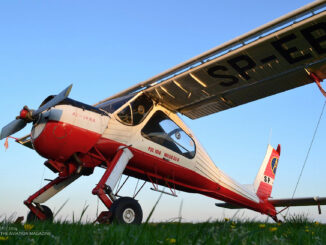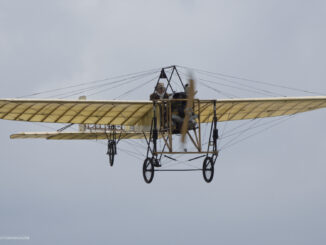 On 28th June 1908, during an event named Kieler Woche (the Kiel Week), Jacob Ellehammer made a flight on a distance of approximately fifty metres, commonly considered the first powered flight in Germany.
On 28th June 1908, during an event named Kieler Woche (the Kiel Week), Jacob Ellehammer made a flight on a distance of approximately fifty metres, commonly considered the first powered flight in Germany.
Jacob Christian Hansen-Ellehammer was born in 1871, in Bakkebølle, Denmark. He trained as a watchmaker, then served with the Royal Danish Navy and later moved to Copenhagen, where he worked as a mechanic. In 1898, he established his own company Ellehammers mekaniske Etablissement and started to repair typewriters and other small machines.
Nevertheless, Ellehammer´s talent for mechanics and electronics quickly expanded the scope of his company, as well as brought the Danish inventor several international patents. Among Ellehammer´s inventions there were beer dispenser, a machine for automatic manufacturing of cigarettes, a device called ´Kinematograf´, an X-ray device, a music machine based on Edison´s phonograph, lamps for light therapy, two types of an air-cooled radial engine and, finally, a motorcycle. The latter was developed in 1904 and then manufactured and sold under the Elleham Motorcycles brand.
When it comes to aviation, Ellehammer´s first aircraft engine was designed already in 1896. In the next step, he began development of a heavier-than-air flying apparatus that finally led to creation of Ellehammer monoplane. In 1905, the aircraft was evaluated in a series of tests, but Ellehammer quickly found the 9 hp engine was not powered enough to make it fly.
The second engine was twice as powerful and, according to Ellehammer and a few witnesses, allowed the aircraft to fly on a distance of forty-two metres, at altitude of 0.75 metre. That first flight occurred on 12th September 1906, on Lindholm, an uninhabited Danish island located in Stege Bugt.
However, the flight was not officially observed, therefore it was not recognized by Fédération Aéronautique Internationale (FAI). Shortly after, the honour of the first aircraft flight in Europe was given to Alberto Santos-Dumont. In November of the same year, Santos-Dumont made a series of flights officially approved by the FAI and earned the French Aeroclub Award (check our article 12 November 1906 – the first officially observed flight in Europe for more details).

In the next few years, Ellehammer continued his aviation development. His subsequent aircraft were more and more advanced. In 1908, he made a flight on a distance of 300 metres – a great aviation achievement at that time. An interesting collection of photographs showing Ellehammer´s projects can be found in The Metropolitan Museum of Art (available online).
In June of 1908, Kieler Verkehrsvereins association organized, within the Kiel Week sports event, a competition of heavier-than-air flying machines. Interestingly, Ellehammer turned out to be the only participant of that contest, as his competitor, German aviation pioneer Otto Hermann Fritsche, died in a car accident shortly before the event.
On 28th June, Ellehammer managed to perform a short flight on a distance of approximately fifty metres. Regrettably, his aircraft was badly damaged during the flight and not able to fly anymore. Both the association and spectators were disappointed with Ellehammer´s performance and, as a result, he was given prize money reduced from the initial 5,000 to only 3,000 German marks.
Although very short, the Ellehammer´s flight became the first officially witnessed performance of motor powered, heavier-than-air aircraft in Germany.
In later years, Ellehammer developed a triplane and a rotorcraft. He also worked on a disc-rotor configuration for a helicopter.
In 1916, after a flying accident he was involved in, Ellehammer retired from further aviation development. He then focused on mechanical engineering, especially engine and pump construction.
Jacob Christian Hansen-Ellehammer died on 20th May 1946, in Copenhagen, at the age of 74.

Cover photo: Jacob Ellehammer with Ellehamer IV aircraft, 1908 (Wikipedia, Public Domain)



